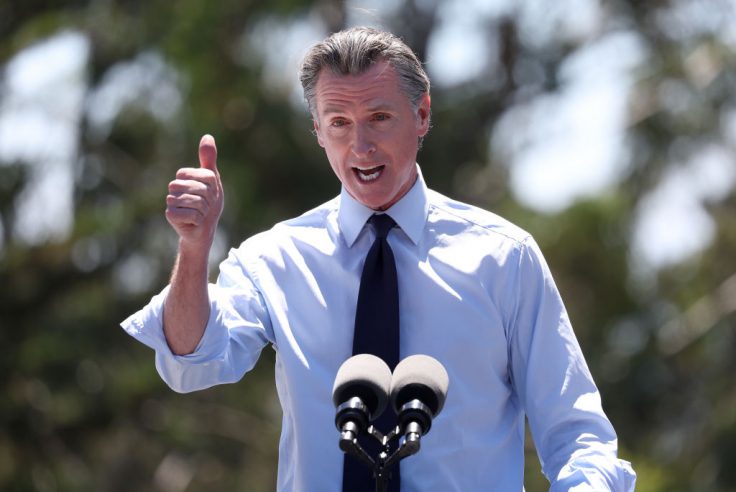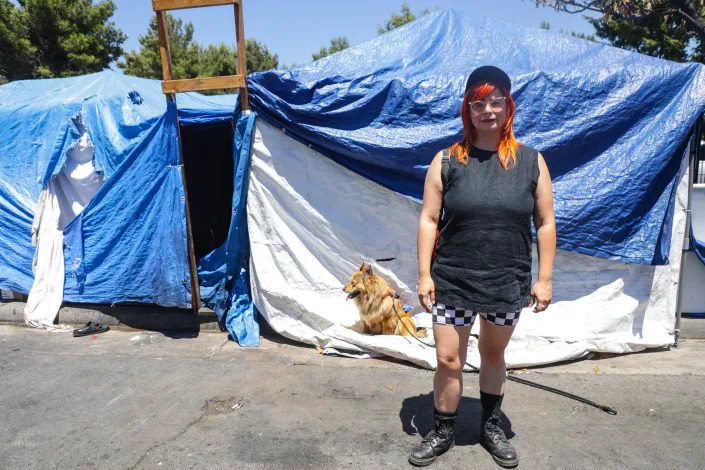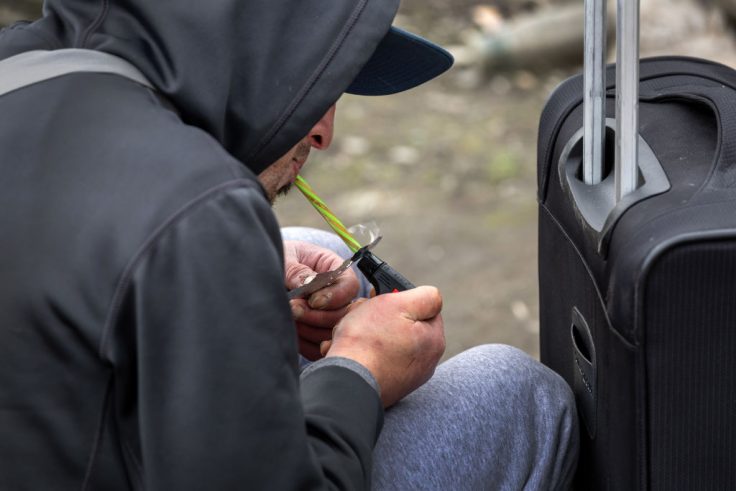“Judicial Watch’s records request is designed to expose how California state legislators are wasting tax dollars to take care of another corrupt politician – Eric Holder – under the guise of resisting the rule of law on immigration and other matters,” stated Judicial Watch president Tom Fitton. “His record at the Clinton and Obama Justice Departments demonstrates a willingness to bend the law in order to protect his political patrons.”
LA's plan to solve homelessness has moved thousands off the streets. But is it working?
LOS ANGELES — More than half a year into Los Angeles' ambitious program to clear tent encampments in the largest street homelessness crisis in the nation, advocates say the plan is falling short.
Los Angeles' attempt to reduce street homelessness is the largest of many programs being rolled out across the country in places such as Denver and Raleigh, North Carolina.
Over 10,000 people have been transported in vans from city sidewalks to temporary housing during Los Angeles Mayor Karen Bass' administration in an effort to bring people indoors and give them access to running water, electricity and shelter from the elements.
But most residents who participated in Bass' Inside Safe program this year remain homeless, stuck in one of nearly 20 hotels across Los Angeles, waiting to be connected with an apartment of their own, according to data from the mayor's office.
"Coming inside to shelter doesn't end homelessness," said LA Family Housing CEO Stephanie Klasky-Gamer, whose nonprofit runs three Inside Safe hotels.
Some participants have also already been removed from the program and returned to the streets, where a growing number of ordinances make sleeping or lying on the ground illegal. Other participants are even organizing to demand housing contracts, saying they lack proper documentation for the hotel rooms the mayor's office gives them.
“It’s created this cycle of displacement and criminalization and further instability that really is the foundation of what Mayor Bass inherited," said Carla Orendorff, an organizer with Aetna Street Solidarity in Los Angeles' Van Nuys neighborhood.
Bass says she understands participants' frustration but argued Inside Safe hasn't "really ramped up yet."
Bass told USA TODAY she is driven to make progress getting people off the streets as quickly as possible and said the social services piece of Inside Safe is still coming together.
"The one thing I did not want to do coming into office, I didn't want to sit around and say, 'We're going to develop the best program and then we're going to launch it,'" Bass said. "We just jumped into saving people from the street. And we have encountered a ton of issues along the way. And I'm going to keep doing it."
Meanwhile, the clearing of tent encampments has given housed Los Angeles residents a new sense of hope that the unsheltered homelessness crisis in their neighborhoods can be solved, Bass said.
"What people have been saying is, if you live, work, drive by or go to school by encampments, you've seen them decrease, you've seen them disappear," Bass said. "One of the most important things from Inside Safe is that we feel confident we can get people off the street. People will leave."
A closer look at LA's plan: LA working to end homelessness and clear tent cities
PAC Spending Shows How Gavin Newsom Is Positioning Himself for a Presidential Bid

California governor Gavin Newsom in March launched a PAC to take on red-state "authoritarian leaders" and create a constitutional gun control amendment. In fact, Newsom said in the organization's launch video that he was "going to these states" led by these strongmen "and investing in people and organizations where they’re fighting back."
The PAC’s spending suggests the Democrat has different ambitions.
Newsom’s Campaign for Democracy PAC has raised $3.8 million since its launch, according to FEC records, but it’s done little with that money to build up political groups fighting back against politicians like Florida governor Ron DeSantis or push a constitutional amendment for gun control. Instead, Newsom has spent millions on Democratic strategists, nationwide ad buys, and photo-op visits to red states intended to burnish his image and build his political profile.
In short, he's building name recognition, and his spending tells the story of an ambitious Democratic governor ready to jump into the presidential race should President Joe Biden choose not to seek reelection, political observers say. "It's obvious that his 'Campaign for Democracy' is really just a 'Campaign for Gavin Newsom,’" said Michael Ahrens, former communications director for the Republican National Committee. "This is the kind of operation you set up when you want to run for president, and he would absolutely jump in the race if the opportunity presented itself."
The Campaign for Democracy funneled $2.12 million to Aisle 518 Strategies, a progressive firm whose other clients include former Democratic presidential candidate Sen. Bernie Sanders (I., Vt.) and failed Georgia gubernatorial candidate Stacey Abrams. About $181,000 went to the Democratic advertising firm used by Newsom’s gubernatorial campaign for ads and consulting, and some $60,000 went to fundraising events and consulting. Meanwhile, he spent about $42,000 on pit-stop visits to red states with his family and staff and gave just under $11,000 in direct contributions to red-state Democrats.
Newsom’s national fundraising and spending numbers come as Biden’s approval ratings hit an all-time low of 35 percent and some Democrats are quietly talking about potential replacements even as they pose a united front, CNN reported in July. Seventy -five percent of Democratic voters don’t want Biden to run again, according to a CNN poll from last week. The California governor is term-limited, and has funneled $11.6 million from his gubernatorial campaign chest to the Campaign for Democracy. In another effort to present himself as a viable alternative to Biden and boost his profile, Newsom challenged DeSantis to a debate moderated by Sean Hannity on Fox News set to take place in November.
At its inception, the Campaign for Democracy began running social media ads pitting Newsom against DeSantis and former President Donald Trump, the leading contenders in the Republican primary. On Facebook, the ads were posted from Newsom’s gubernatorial campaign account.
Since then, the campaign ads have blasted Republicans, urged "grassroots support" for a gun control amendment to the Constitution, and touted Newsom’s June Fox News appearance with conservative host Sean Hannity.
Newsom spent more than $40,000 on plane tickets and hotels for whirlwind tours of red states—including Mississippi, Alabama, and Arkansas—where he posted photos from civil rights sites and lambasted conservative policies. In April he sat down for an MSNBC interview with Biden’s former White House press secretary Jen Psaki in Alabama.
The PAC’s records show that Newsom also sent just $10,000 to Arkansas Democrats and $744 to Colin Allred, the Democratic challenger to Texas Republican senator Ted Cruz.
The campaign’s setup is geared toward nabbing headlines and boosting Newsom’s national image rather than the stated mission of actually helping Democrats in red states or getting a constitutional amendment passed, said Bill Whalen, research fellow at the conservative Hoover Institution.
"It’s one thing to say you want to get involved in red state politics, and then a whole other thing to go to the red state and put the resources in to try to make a difference," Whalen said. "By doing these symbolic gestures like going to red states to talk about civil rights and gun control, it gives him the appearance of Daniel in the Lion’s Den even though he’s not going anywhere near the lions."


No comments:
Post a Comment